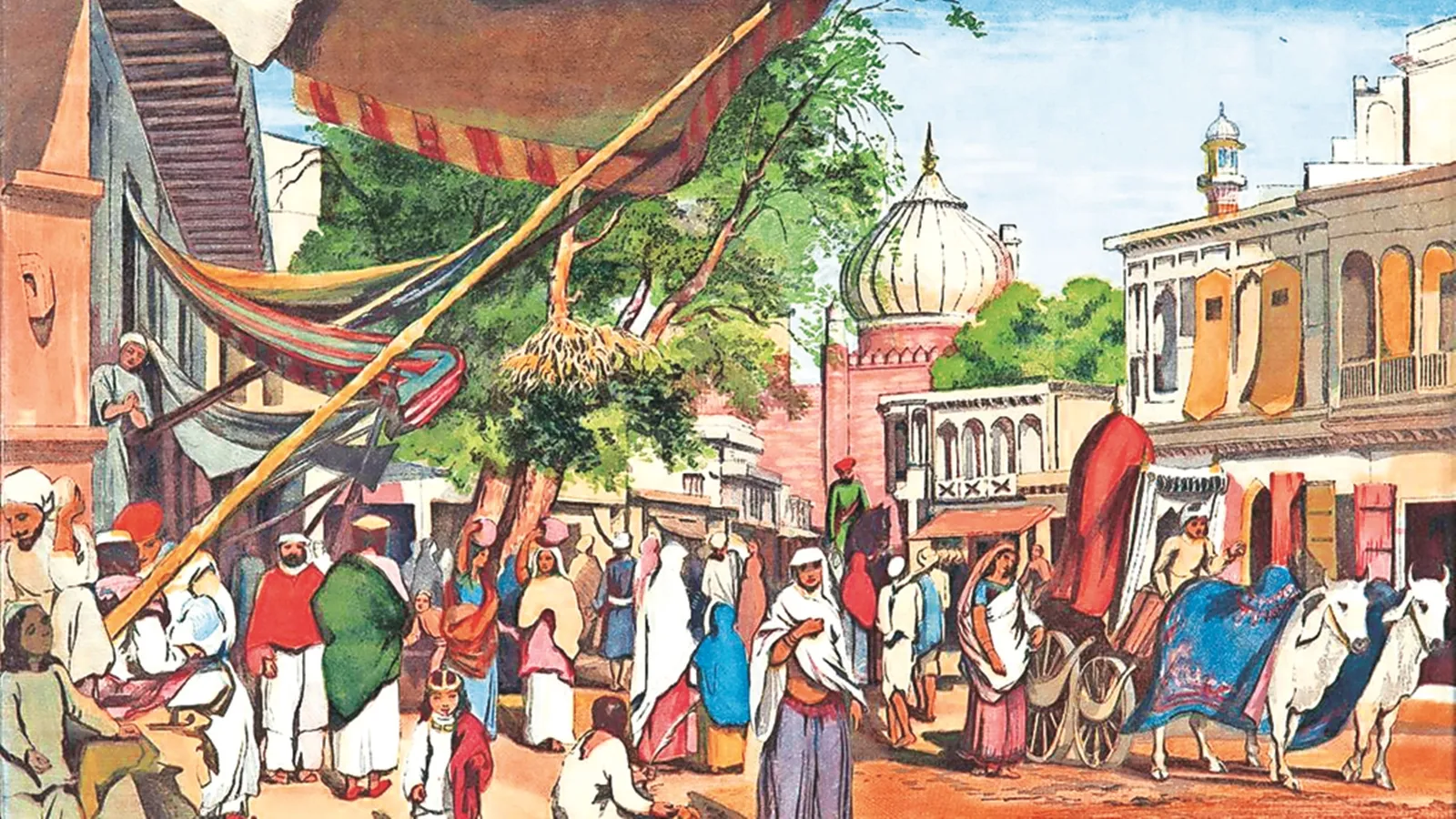Restored to its former glory in 2018, the 13-meter high arched gate of Arab Sarai in Delhi’s Nizamuddin East stands mighty now but when Danish artist Hugo Vilfred Pedersen was in Delhi in the early 1900s, it was evidently in need of repair. Despite its crumbling state, it did catch the attention of the voyager who painted it in oil with crumbling borders that depicted the inlay stonework falling apart.
The canvas with impressionist brushstrokes now forms part of the exhibition “Destination India” at the Delhi Art Gallery (DAG) that documents India between 1857 and 1947 through works of foreign artists travelling through the country. On till August 24, the exhibition is also a testament to how a number of them were interested not just in monuments but, unlike most of their predecessors, also in scenes from everyday life, people and society.
“They (the artists) were attracted to the people, and not just to the grandees, but to ordinary people in the streets,” writes Ashish Anand, CEO and MD of DAG in a book accompanying the exhibition. On display are works of nearly 40 artists from across the globe, including Britain, Germany,
The Netherlands, Denmark, France, and Japan.
“The aim is not merely to retrace the steps of those who came before but to explore the intricate perspectives of a new generation of artists who found different nuances and beauty in the Indian subcontinent,” writes MP Shashi Tharoor in the book.
So while we do see familiar scenes and monuments — including Delhi’s Jama Masjid — the gaze is atypical. If artist William Carpenter’s 1857 wood engraving depicts a crowded street behind the iconic mosque with its dome visible from a distance, in a 1864 work, William Simpson presents a bird’s-eye view of the monument, then surrounded with vast open grounds.
Art historian Pheroza Godrej notes in the publication: “The show uncovers a forgotten archive of painters and printmakers in a fast-changing (colonial) India, in a period when images were being transmitted as picture postcards (from 1880 onwards) and photography had become the dominant medium of documentation.”
The exhibition view begins with works of Dutch artist Marius Bauer, who toured India twice — in 1898, and 1924-25. Knighted thrice in the Netherlands and a recipient of the prestigious Grand Prix at the Paris Exposition 1900, his very first watercolour in the exhibition has a terrace with canopies and dancing peacocks. In other works, the Orientalist artist also paints the ceremonial ox-drawn cart and elephants, and a courtyard of a palace. Illustrator of children’s books Walter Crane depicts the Tomb of Mohammed Ghaus in Gwalior in his 1907 watercolour on paper. In Mary Anne Blyth’s 1860 watercolour, we see the falls of Courtallam in Tirunelveli.
Portraitist and landscape artist William Carpenter’s 1858 wood engraving has “Raja Jowaher Singh and Attendants” in bright hues. Simpson paints a gypsy girl in The Brindjarries (1863), and the prolific Horace van Ruith paints a Shaivite ascetic, and portrait of a Maratha man. We also see Lutyens’ Delhi as it was being built. In London-born David Gould Green’s 1916 watercolour and pastel on paper, the dome of the Rashrapati Bhawan is visible from afar, years before it was completed in 1929.
Click here to join The Indian Express on WhatsApp and get latest news and updates

